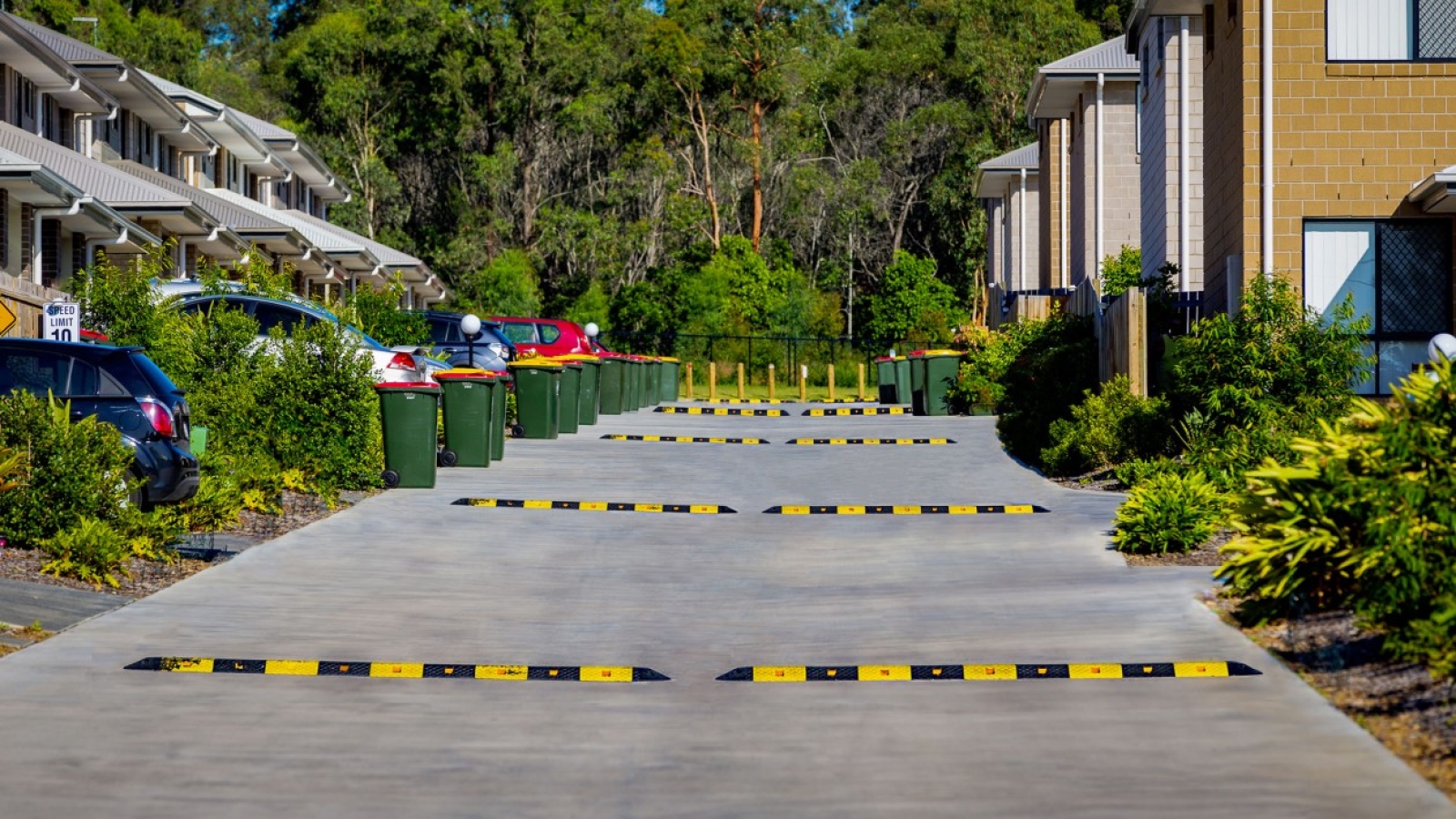In the United States it is vital to have traffic calming measures on every property in order to avoid traffic accidents, and this can be accomplished by reducing the vehicle speed by adding speed bumps or speed humps along the roads.
Both kinds give similar results, however there are some differences between them that could mean choosing one or the other, read more to understand how these two differ:
Speed Bumps: These create a gentile vehicle rocking while the vehicle displaces on it, making the automobile reduce its speed limit in order to exceed the obstacle without any hard bump or damage. If the vehicle exceeds the speed bump with high speed, it could cause damage to both the machinery and the passengers, that is why it is mandatory to slow down when driving over these.
Speed Humps: Similar to Speed Bumps, the Speed Humps are devices that are located on the roads of a property in order to slow down the vehicles that transit through it. These types of speed obstacles are slightly bigger and cause more subtle bumpers, measuring around 3 and a half inches in height and 14 feet in width.
With Speed Humps, the vehicle takes much longer to exceed the obstacle and it has to slow down its speed in order to avoid car damages. Also, Speed Humps could be implemented in one or more traffic lanes and it is possible to install them in series to keep slow speed on extended roadway portions.
Why are Speed BUMPS Important:
In all parking lot facilities, regardless of their size, speed bumps are required in order to avoid any accidents caused by speeding. They help avoid collisions between cars and provide safety to pedestrians preventing them from being run over.
Why are Speed HUMPS important:
There are dilemmas concerning speed humps functionality. Many drivers argue it is a bad solution not only because it causes car damage but also could be more uncomfortable to the passengers. Nevertheless, other people highlight the importance of these devices in terms of safety.
With speed hump installation, vehicles must reduce their speed down to 10 mph to 15 mph at the exact moment they are going through the speed hump, and 25 mph to 30 mph between two of them in a series, increasing the response time in case of accident possibility.
Speed humps are an excellent solution in commercial facilities, because it’s installation carries an increase in both, customers and employees safety. In addition, thanks to the speed reduction that cars are forced to have, lives can be saved in the event of accidents because if they do occur, they will happen at reduced speeds, so the consequences will be minor.
Finally, apart from security, they are very useful for commercial establishments because drivers often try to use the facilities near highways as shortcuts due to traffic congestion. With speed humps, these drivers are prevented from making these maneuvers as they would be forced to slow down.
Both types of speed tables are effective ways to control speeding, however, which one should be used depends on the traffic volume. For instance, in state highways where the speed limits usually range from 70 mph to 75 mph and emergency response vehicles transit, there will never be speed humps or speed bumps.
Materials And Specifications:
Usually, speed humps/bumps are made of asphalt or rubber, but there are other material possibilities such as plastic, steel, concrete or even recycled rubber; which also perform well on the roadway and make people respect the posted speed limit on residential streets.
When these road bumps are made of rubber or plastic, they are easy to install and are more efficient, which saves costs on material and labor due to the reduced time. These materials are lightweight and are ideal when its installation is temporary. Furthermore, it is recommended to apply rubber speed humps in very wintry locations, since it facilitates uninstalling them in order to make efficient snow plowing in the area.
Likewise, rubber has better compression quality than the asphalt or concrete speed bumps has, that is why it is better for the vehicle when passing by with a high speed or when the vehicle is low to the ground since it will not cause any damage at all.
Moreover, this compression quality lets the motorized vehicles exceed the stop by slowing down just a minimum of speed which is contrary when there is a speed hump/bump made by concrete or asphalt. It is important to mention that this material is not recommended when there is constant traffic of heavy industries vehicles since their useful life will be shorter and will be less efficient.
While those that are made of asphalt or concrete are usually built by experts such as municipal road crews or private paving companies since that the process is complex, dangerous and requires heavy duty machinery.
As mentioned before, asphalt and concrete have lower compression quality than other materials such as plastic or rubber, that is why these materials are much more effective when it is needed to slow down the traffic speed, nevertheless, along time and with several climatic changes, concrete and asphalt begin to waste and crack, so it is mandatory to contact a reliable asphalt and concrete company on order to repair the damage immediately.

